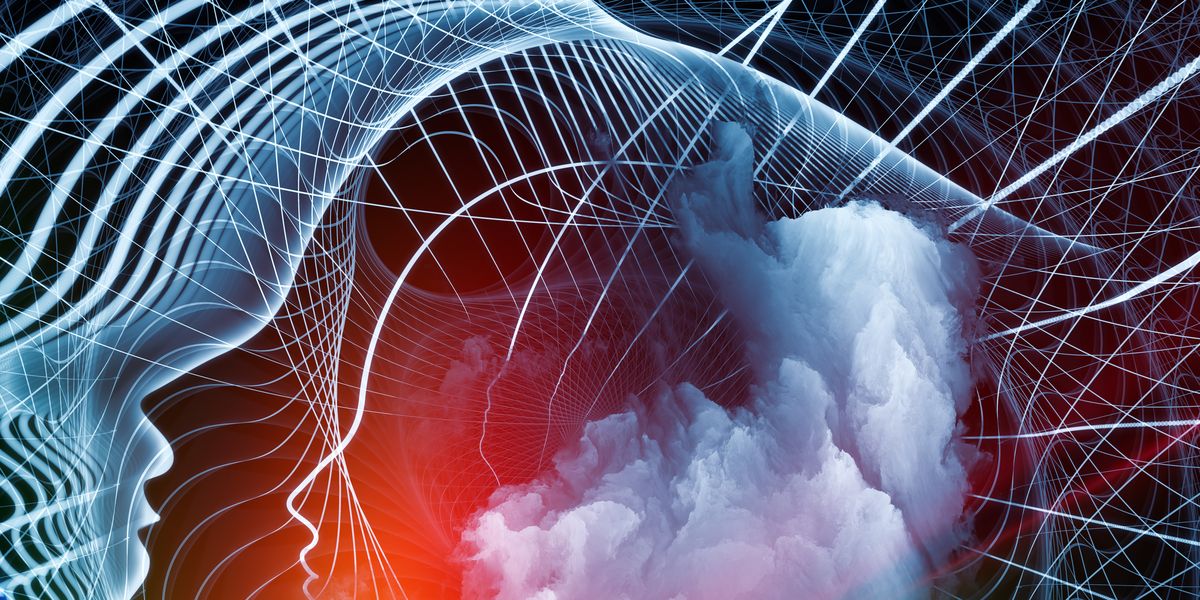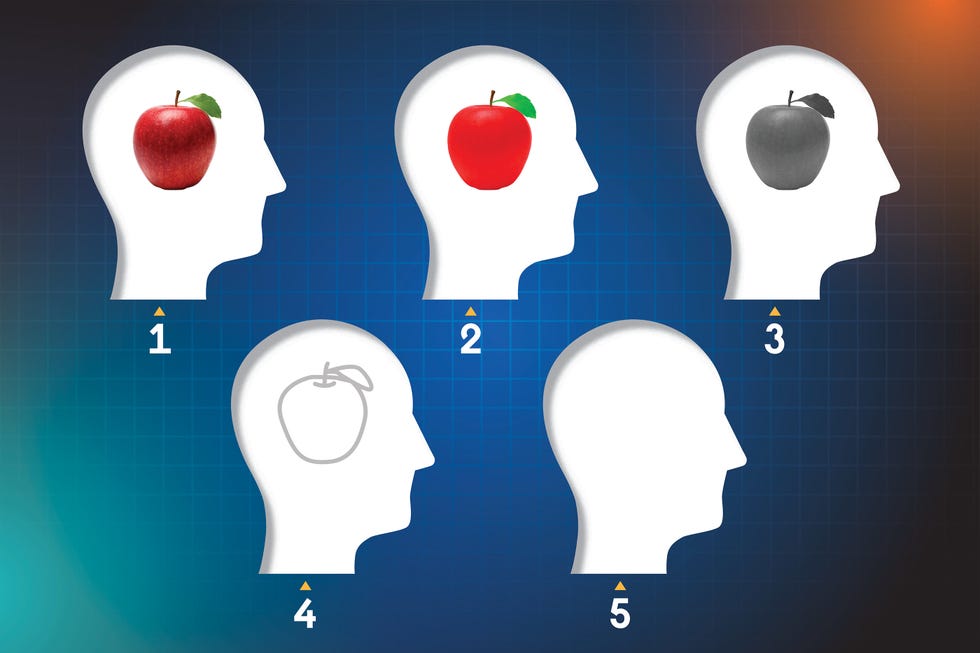Here’s what you’ll learn in this story:
Recent neuroscience research shows that people have distinct patterns of brain connectivity and function when it comes to visual imagination.This ability runs the gamut from aphantasia, the inability to create a true mental picture, to hyperphantasia, automatically creating a vivid image that almost feels like seeing the object in real life. But everyone imagines the apple in their own way.Scientists believe our ability to imagine evolved to prepare us for future experiences, and that we draw on previous experiences to simulate novel scenarios.
Apples seem to have become the internet’s symbol for imagination—or at least, mental imagery. Every so often, someone takes to X or Reddit and asks what other users see when they imagine an apple. Responses may range from vivid descriptions of the apple’s coloration and shine to a complete absence of visual detail.
But what nobody seems to appreciate is the assumption that all responders are picturing an apple in their “mind’s eye.” In fact, about 1 to 3 percent of people experience an extreme form of “imagery vividness.” It could mean conjuring an image so vivid that it seems to have projected an apple into real life—or, on the opposite end of the spectrum, thinking about an apple in totally non-visual terms. Scientists are still seeking to understand the neurological mechanisms behind this wild variation, and how people navigate the world effectively no matter where on the scale their visualization lies.
When it comes to the neuroscience of imagination, “there’s a few different hypotheses floating around,” Wilma Bainbridge, Ph.D., a professor of psychology at the University of Chicago says, “but the commonly accepted idea is that seeing something in your mind’s eye is like the visual system working in reverse.”
The visual system begins with light entering the eye. Millions of nerve fibers that comprise the optic nerve process this information and relay it directly to the brain. The visual cortex resides in the occipital lobe, which is at the very back of the brain. When we see something, our brain starts with the object’s basic, concrete aspects, Bainbridge says. It begins with detecting lines and colors before categorizing the object verbally and understanding its relationship to other nearby objects. In that sense, the brain climbs the ladder of abstraction, assembling more basic concepts before reaching more complex levels that involve meaning.
But when you switch from looking at an apple to visualizing one in your mind’s eye, this hypothesis says your brain might start with abstract concepts, first calling to mind what it wants to visualize, before moving to concrete characteristics like shape and color. A 2019 paper published in the journal Nature Reviews Neuroscience describes this process as “reverse visual hierarchy.”
The apple test also introduces a spectrum of visual imagery, which shows two conditions that fall at either end: aphantasia and hyperphantasia. Those with aphantasia don’t see anything in their mind’s eye, while those with hyperphantasia imagine elaborately detailed objects and scenarios that seem almost lifelike.
Yet, perception far extends beyond sight, pulling together other types of sensory information, like hearing and smell. So does our imagination, though research tends to favor visual imagery, according to the 2019 paper. Understanding the differences in brains of those with atypical imaginative capabilities, like aphantasia and hyperphantasia, can help provide greater insight into how humans create mental pictures.
In one experiment to investigate the neural mechanisms of aphantasia, Bainbridge examined identical twins, one of whom had the condition. She and her team used functional magnetic resonance imaging (fMRI) to measure blood flow in the brains of a pair of identical twins as they performed mental imagery tasks. Tracking blood flow in the brain can help indicate which parts are more actively involved in different abilities. The work was described in an April 2025 paper on the preprint server bioRxiv and is awaiting peer review.
From her self-reported scores of mental imagery vividness, the twin with aphantasia had diminished object imagery, but “intact” spatial imagery, which the paper says is typical for those with aphantasia. In other words, while people with aphantasia don’t see images in their mind’s eye, they can still imagine spatial relationships between objects. Part of the case study involved the twins drawing three scenes, first by sight and then from memory. The aphantasic twin accurately reproduced these scenes in both cases, but with “starkly less detail—including no color” than her sister, according to the paper.
A potential explanation for aphantasia could come from less functional connectivity between the area of the brain that deals with spatial and color processing and the area that deals with memory storage, Bainbridge and her co-authors suggest. However, aphantasic brains do have increased connectivity among non-visual areas, the paper says.
Research has found that people with aphantasia are no less creative or imaginative than those who can picture an apple—just not through vivid imagery. They may recall taste, smell, and sound ahead of sight, or abstractly know an object’s shape and color without seeing the object, as one 2021 paper describes. A 2024 paper does stipulate that about 40 percent of people on the aphantasia spectrum report difficulty with recognizing faces, also known as prosopagnosia. This paper also reports that aphantasic people take longer to complete visual processing tasks.
On the other end of the spectrum, people with hyperphantasia have a kind of visually comprehensive, extremely detailed mental picture of objects, similar to looking at the objects in real life. They also have more frequently reported synesthesia, or the condition of experiencing two senses at once—perhaps seeing colors spontaneously along with numbers or letters, for instance. People with hyperphantasia also tend to work in creative fields where object imagery is crucial, while people with aphantasia are more prevalent in mathematical and scientific fields where spatial imagery is necessary.
Researchers think they know at least one good reason for our powers of imagination, no matter how they manifest for each of us.
Our ability to imagine things could be an extension of the ability to predict what we’re going to perceive. Prediction is important to anticipating what stimuli we might experience so we’ll know how to respond, says Shimon Edelman, Ph.D., a professor of psychology at Cornell University. Other animals need the ability to predict too, in order to know what’s out of the ordinary and worth paying attention to. But perhaps they don’t have the ability to imagine, at least the way we do, Edelman says.
Yet, all the monsters, places, people, and scenarios we might imagine to be novel are actually simply composites of the vast amount of experiences we’ve processed during our lives, Bainbridge says. “If I have you visualize a purple elephant and a cup of milk, that all relates to something you’ve seen before, but you’re just combining them in unique ways.”
👉 More Brain-Body Stories

